INTERVIEW WITH NICOLE LEUNG
by Rebecka Öhrström Kann 28/02/2024
Nicole Leung is an interdisciplinary artist based in Chicago whose work uses performance and everyday objects as metaphors to explore the formation of human attachments. Employing self-reflection as a method, Leung draws on their own experiences in relation to others, expressing vulnerability through metaphorical relationships between found objects placed in the gallery. Navigating notions of presence and absence, Leung’s simple gestures enact moments of ambiguity in space, inviting the viewer to maneuver through unfamiliarity as an encounter with transformative potential. We spoke about the importance of introspection, fear of changing direction in your practice, and their interest in subverting expectations of the institutional space.
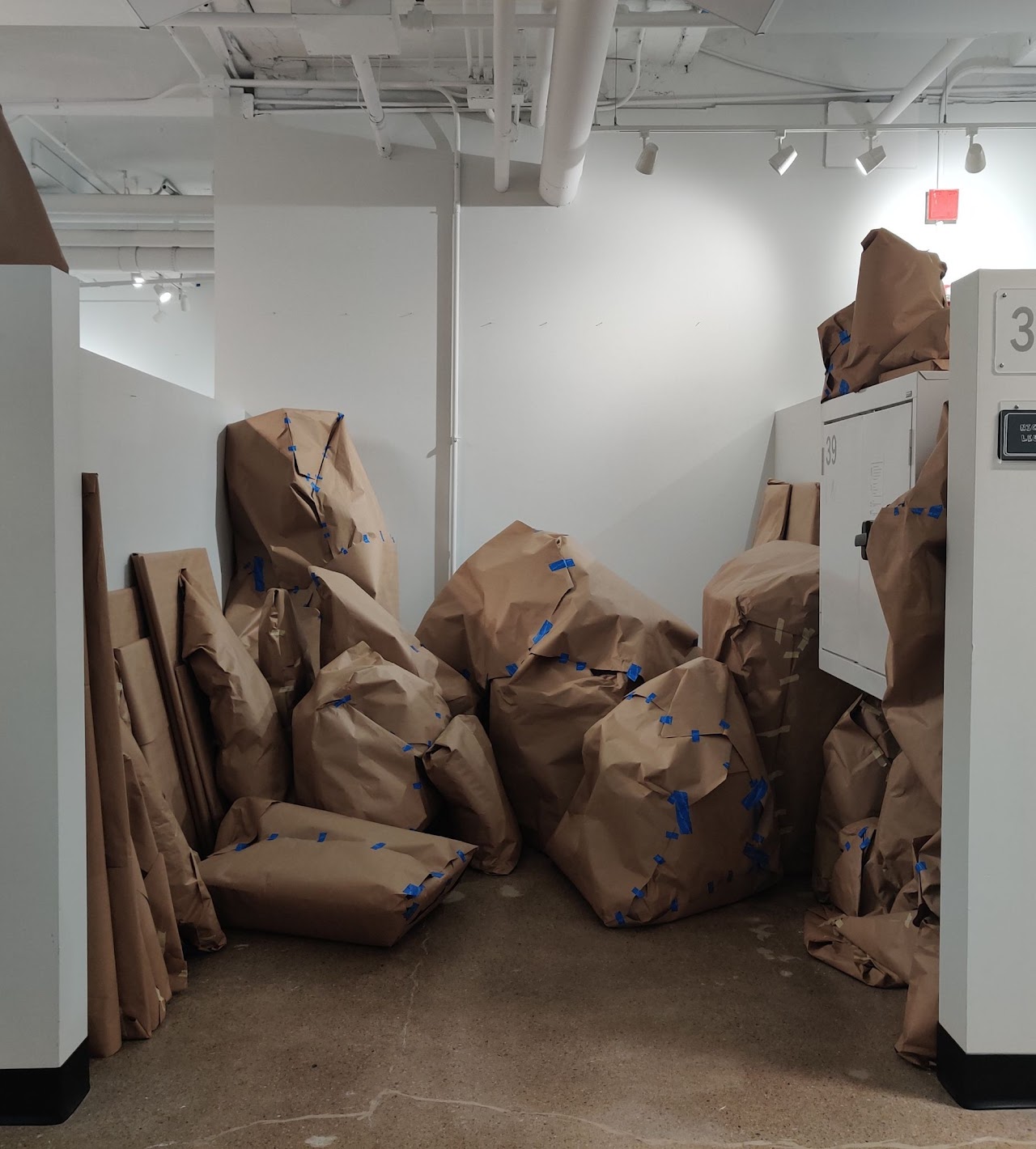
Rebecka Öhrström Kann: How would you describe your work to someone who has never seen it?
Nicole Leung: I think it's tricky for my work just because it's gone through so many iterations and so much change over the past few years. I started out at Columbia College Chicago with my focus being in painting and drawing, and I was like, “This is going to be my thing!” I felt so certain. But then I started experimenting with sculpture, and I was really into using tights and stuffing them and seeing how they interacted with different scrap materials I would find on campus - really interested in how organic forms could mold around more rigid ones. And then from there, I got really into performance, which informs what a lot of my work looks like now, which is taking everyday objects and kind of personifying them, and understanding the ways in which they can interact and how we tend to use them as metaphors for human attachments and relations.
RÖK: I love that idea of personifying these objects, bringing them into the space and seeing how they take on other roles outside of their original functional. How do you go about finding objects, and what makes a specific object interesting to you?
Nicole Leung: I think it's tricky for my work just because it's gone through so many iterations and so much change over the past few years. I started out at Columbia College Chicago with my focus being in painting and drawing, and I was like, “This is going to be my thing!” I felt so certain. But then I started experimenting with sculpture, and I was really into using tights and stuffing them and seeing how they interacted with different scrap materials I would find on campus - really interested in how organic forms could mold around more rigid ones. And then from there, I got really into performance, which informs what a lot of my work looks like now, which is taking everyday objects and kind of personifying them, and understanding the ways in which they can interact and how we tend to use them as metaphors for human attachments and relations.
RÖK: I love that idea of personifying these objects, bringing them into the space and seeing how they take on other roles outside of their original functional. How do you go about finding objects, and what makes a specific object interesting to you?
NL: My practice is like a puzzle or a matchmaking game. A lot of my practice is not necessarily collecting, I also do a lot of writing, and my therapy work plays a lot into my practice. Usually, it involves me coming to realizations about myself and the different ways I've related to people in the past and currently. It's a simultaneous process of me coming to these realizations and also just being out and about and drawn to certain objects. On my Instagram, I'll post these photo series of things that interest me as I go out, and they are also a way of collecting objects in a way. Even if I can’t necessarily articulate why they're interesting to me at the time, it’s from a particular context in how I am relating to myself. I’ll take moments to write about the objects I see or find that I’m fascinated by, and tend to end up in a place where my understanding of what I’ve seen connects with ideas that have been resonating with me. Locks and keys have consistently been objects of interest to me. I remember once, while I was just walking, I noticed this locked box on the street with this little padlock behind the door handle, and I’d never really stopped to acknowledge that before! And I thought that was so strange. At the time, I had recently gotten out of a very codependent relationship, and was trying to regain my sense of self. I’d really lost myself, and was realizing how much I’d subscribed to the notion of being “completed” by a partner, much like a lock and a key. And it's so “cute” as a metaphor for feeling truly seen and loved by someone, but my perception of it based on my experience was pretty soured, and became very much perceiving myself as this entity that needs to be fulfilled by something outside of myself - a kind of a self-sabotaging process. I’ve been oscillating between seeing locks and keys as metaphors for how we relate to others, but also how we relate to ourselves - there’s a beauty in recognizing you are complete as you are, that life is just reintegrating lost and neglected parts of yourself to feel whole again, rather than seeking them out in the external world. So the collection of objects kind of happens from a place of me sitting with myself and trying to understand myself more, which informs how I contextualize them.

RÖK: I’d love to hear about the importance of writing in your practice.
NL: I'm a big-time journaler. I love journaling so much and I think it's a way for me to simultaneously question and come back to myself, especially in considering how I understand people and how relate to them, and by extension, how I relate to myself. I am really into attachment theory and understanding how different insecurities can be informed by attachments from childhood and how that initial relationship with your parents can really impact how you relate with the rest of the world. So a lot of my journaling is me introspecting and taking into account broader concepts to tie it all together. I’ll write about objects separately, as well (free association writing), and more often than not, it helps me tie them back into whatever concepts have been resonating most with me. It can feel like such an ambiguous process at times because it’s so instinctual and rooted in how I feel that I often get so scared that I won't have the perfect match in my mind, for a particular idea or a particular object. But I think that’s something I have to work through - valuing my process as my practice more than a tangible outcome. It’s all a process.
NL: I'm a big-time journaler. I love journaling so much and I think it's a way for me to simultaneously question and come back to myself, especially in considering how I understand people and how relate to them, and by extension, how I relate to myself. I am really into attachment theory and understanding how different insecurities can be informed by attachments from childhood and how that initial relationship with your parents can really impact how you relate with the rest of the world. So a lot of my journaling is me introspecting and taking into account broader concepts to tie it all together. I’ll write about objects separately, as well (free association writing), and more often than not, it helps me tie them back into whatever concepts have been resonating most with me. It can feel like such an ambiguous process at times because it’s so instinctual and rooted in how I feel that I often get so scared that I won't have the perfect match in my mind, for a particular idea or a particular object. But I think that’s something I have to work through - valuing my process as my practice more than a tangible outcome. It’s all a process.
RÖK: You are currently an artist in residence at the HATCH project at Chicago Artists Coalition, and I’m curious what that process has been like and how your practice has developed.
NL: Initially, there was a bit of stagnancy, I guess, with finding a new direction and everything. But I think it's been helpful for my practice in that sense! When I graduated from Columbia [right before I started the residency], I was going through a period where I was just really lost and fully about to abandon my practice. I was just not making work the way I used to. In retrospect, my practice is now pretty cerebral - it's pretty much piecing together ideas. It felt very jarring to find my place in the world after school and having to rebalance my practice - it’s been scary! Being in a residency honestly just forced me to consider my practice more actively and not just constantly push it aside. A friend and I were talking about the fear of making work in a new way - how it can be so scary because you're questioning and reevaluating how you relate to yourself. I remember they said something in particular that’s really stuck with me - along the lines of “If you hold your practice so preciously by putting it on a pedestal, you’re distancing yourself from it, which only makes it hard to even interact with it and claim it as your own.” When I was feeling like basically abandoning my practice, believing I wasn’t an artist because I wasn’t working in ways that I was used to and how I would see other artists working in my bubble, that was just really grounding. If I treat it as this momentous thing that has all of my value tied into it, it just loses that flow and appeal.
NL: Initially, there was a bit of stagnancy, I guess, with finding a new direction and everything. But I think it's been helpful for my practice in that sense! When I graduated from Columbia [right before I started the residency], I was going through a period where I was just really lost and fully about to abandon my practice. I was just not making work the way I used to. In retrospect, my practice is now pretty cerebral - it's pretty much piecing together ideas. It felt very jarring to find my place in the world after school and having to rebalance my practice - it’s been scary! Being in a residency honestly just forced me to consider my practice more actively and not just constantly push it aside. A friend and I were talking about the fear of making work in a new way - how it can be so scary because you're questioning and reevaluating how you relate to yourself. I remember they said something in particular that’s really stuck with me - along the lines of “If you hold your practice so preciously by putting it on a pedestal, you’re distancing yourself from it, which only makes it hard to even interact with it and claim it as your own.” When I was feeling like basically abandoning my practice, believing I wasn’t an artist because I wasn’t working in ways that I was used to and how I would see other artists working in my bubble, that was just really grounding. If I treat it as this momentous thing that has all of my value tied into it, it just loses that flow and appeal.

RÖK: There is so much energy put into the end goal of things that sometimes we forget the importance of the act of creating.
NL: Yeah, I feel like there's always this pressure of what the final thing will look like and how will people engage with it. But, at least where my practice is now, it's definitely more about the process of getting there and that experience of looking at myself, looking at others. Trying to cut the fat and just kind of have the core dynamic.
RÖK: That reflection and introspection seems like such a core aspect of your work, perhaps almost as a therapeutical means.
NL: Definitely. I think that self-reflection feels to me like a crucial part of any person's practice - not necessarily just reflecting on old ways of working and approaching material, but also considering old ways of being and relating. Looking back at how I used to work, I came to the realization that how I used to work was very much me avoiding confronting myself, parts of myself that I’ve grown to fear and shame over the years. I would create this narrative around what I was thinking about, around these emotions and memories, like circling the drain, as opposed to just confronting them head-on. I think that with personal reflection, there's a fine line between using your work as a way to isolate parts of yourself you deem acceptable and putting them into the world for others to consume. But sometimes the work feels like it lacks something authentic and genuine (an introspectiveness?) There's a tangible disconnect in the experience of it. I think it comes from that sense of “Are you using your work to confront parts of yourself, or are you just using it to kind of tell yourself a story about yourself?” There are so many degrees of separation and protection, but from what? It’s interesting to me - creating work is a process of valuing an idea, and by extension yourself, but to selectively curate an experience in this way has always felt like toying with an illusion of vulnerability and, in a way, abandoning yourself.
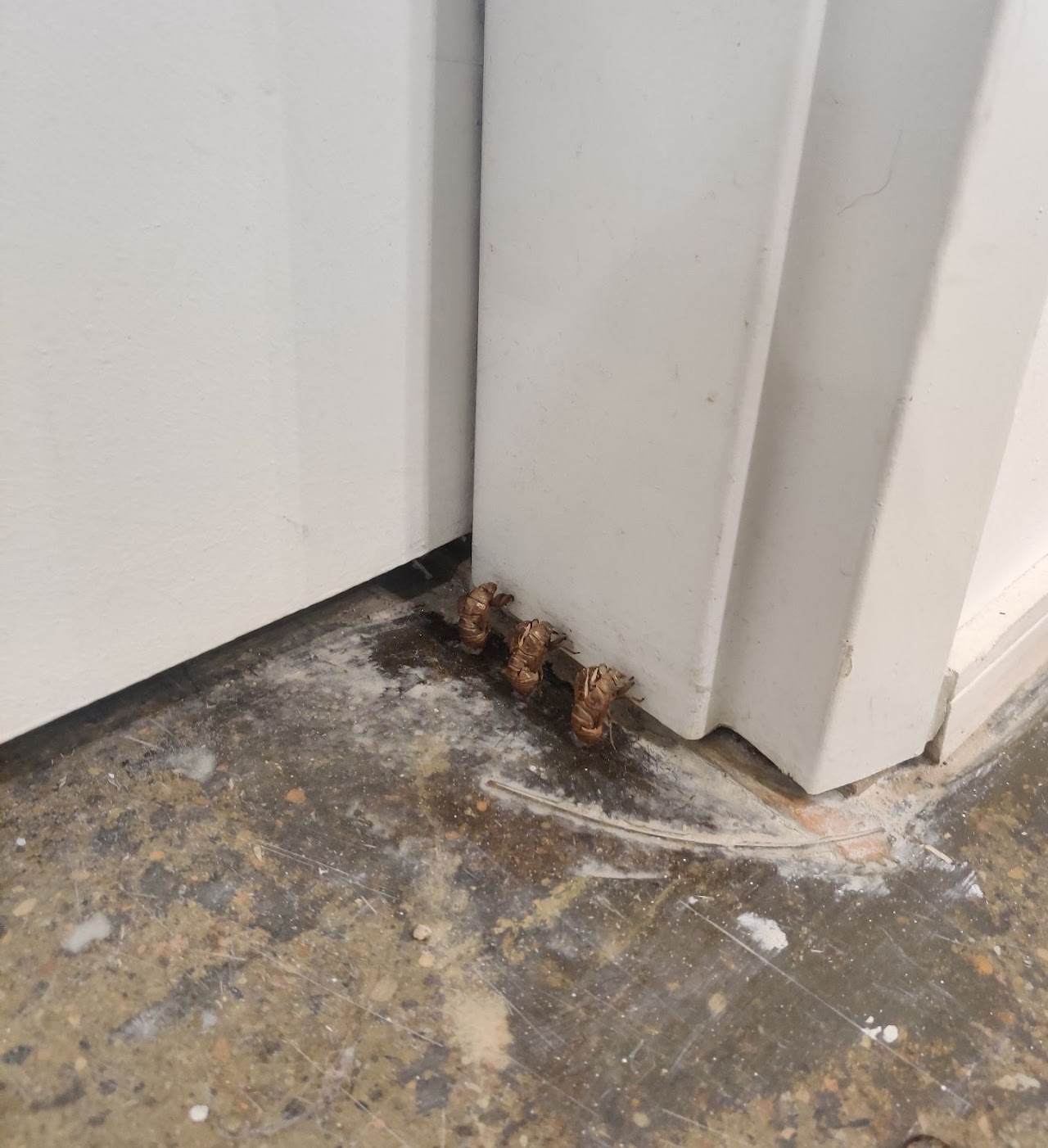
RÖK: That emphasis on self-reflection is really interesting, and this notion of transformation you also explore in your work, I also know the way the old life haunts the new, 2023, currently on display at CAC [at the time of the interview in December]. Could you talk about the importance of transformation or transcendence in your practice at large?
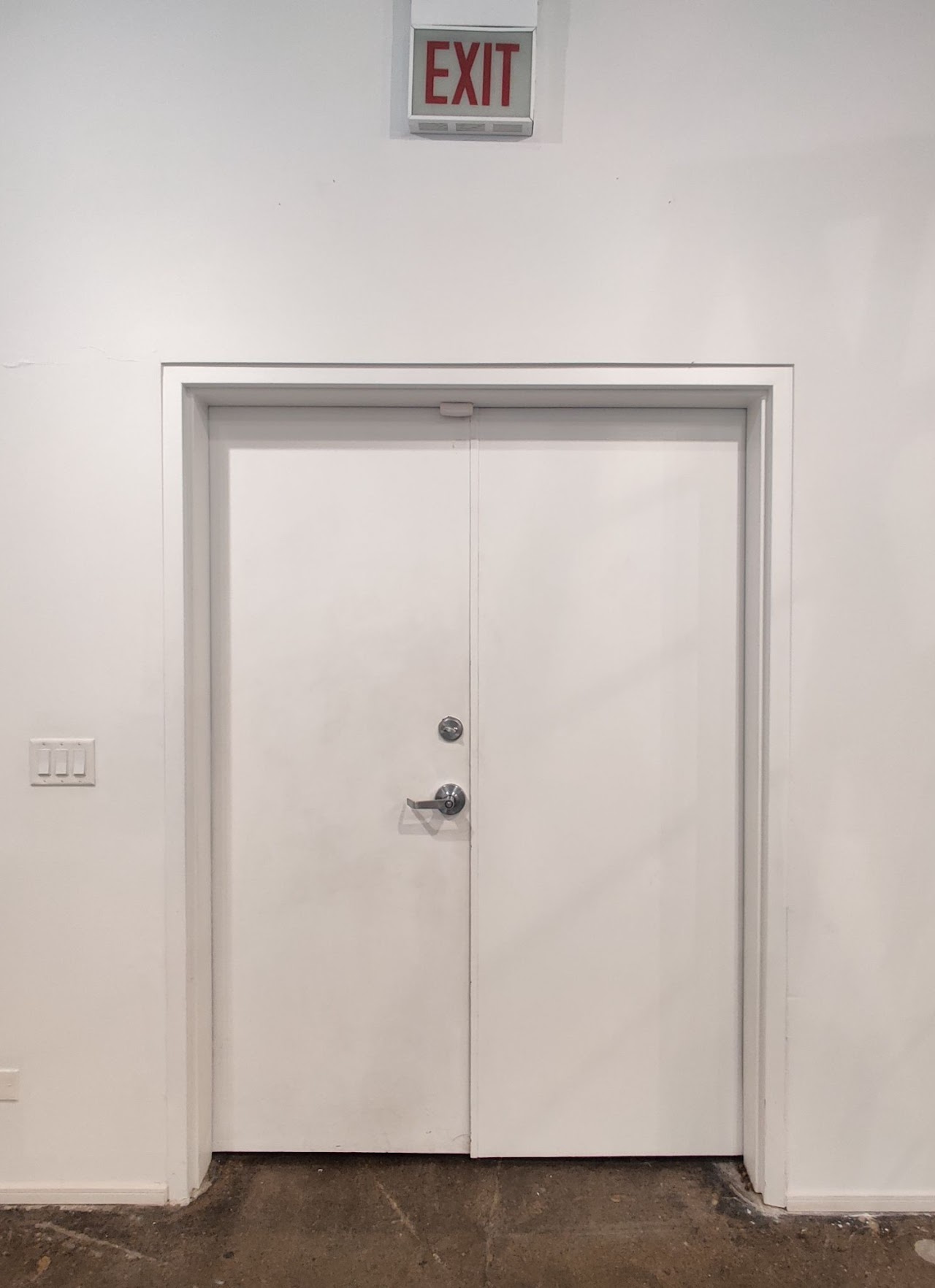
NL: There is this article I read a while ago. I wish I could tell you the name, but I can't. It was about perfectionism versus wholeness, and there was a line that really stuck with me, about how wholeness and perfectionism can't coexist. That the whole has to be broken or fragmented, to begin with. For me, thinking about transformation, relating to the self from different external entities, and trying to use those as a way to make yourself feel whole, there's this transformative process in realizing that even if you have these feelings of uncertainty and insecurity, inherently, you're a whole being because you are capable of experiencing those feelings. I’m learning to cope with those feelings and integrate them into my understanding of myself and how I experience the world, so a lot of the ways I see objects mirrors this. There isn’t necessarily a transcendence - more so, a return and full integration of the self within the self.
RÖK: Who are some of the artists that influenced you early on? And what was it about their work you liked/were impacted by specifically?
NL: When I was painting, Francis Bacon felt like a very obvious choice. I think I've always been really drawn to image-based work that has a certain organic flow to it visually, like Bacon’s. Bodily forms are really intriguing to me, and the organic flow of a figure in a space makes a lot of sense to me - the body warping and twisting in ways within the confines of a two-dimensional surface feels like an attempt at escape, or at least, to push the boundaries.
NL: When I was painting, Francis Bacon felt like a very obvious choice. I think I've always been really drawn to image-based work that has a certain organic flow to it visually, like Bacon’s. Bodily forms are really intriguing to me, and the organic flow of a figure in a space makes a lot of sense to me - the body warping and twisting in ways within the confines of a two-dimensional surface feels like an attempt at escape, or at least, to push the boundaries.
Now I think a lot of my work is informed by performance artists. I am a big Chris Burden fan, but Pope L. and Vito Acconci are really important to me, as well. I love how they test bodily limits and have that tension and ambiguity in their approach - relating to others in a way that's unexpected and uneasy , especially in a socially conventional setting that has unspoken yet universally accepted norms of how to interact with the space and the people in it.
![Nicole Leung, Untitled (Nicole Leung is too American to be Chinese and too Chinese to be American), 2022, plastic sheeting, in-line duct fan, packaging tape, thread, archival pigment print, artist frame. From the exhibition
I bet you can tell just by looking at the back of my head at the Chinese American Museum of Chicago. Image courtesy of the artist.]()

RÖK: We experience space so differently, even aspects like height influence how you interact or perceive a work, and I find it fascinating how attentive you are to the way you move and inhabit space when you make a work. Could you talk us through the different stages of creating a work for you?
NL: I move back and forth between my writing and considering objects. I’ll seek out written materials, or they’ll be given to me, but what helps my practice stay afloat is being moved by the written or spoken word of others (reading others’ words, listening to music, having vulnerable conversations). It’s very much me going with the flow and being attentive to what comes to me, but also seeking out those attachment wounds and security topics that I'm really interested in. I think my practice is really rooted in considering those ideas, so that's kind of the foundation, and then I kind of branch out from there and see what other sources of information or just different objects or sites I can tie into it.
In terms of installation and considering the space itself, I really take from what draws me to performance as a part of my approach to space and the bodies that inhabit it. I have this tendency to install work in the peripheries of spaces. As I’m installing, I’ll wander around the space for a moment to get a feel for how it can be entered and maneuvered. I’ll look for different spots that feel like “hiding in plain sight” for my work to potentially inhabit. There’s an expectation for work to be seen in a space, and that’s something I’ve always been interested in pushing - trying to balance the experience of a space with the work, so one’s presence doesn’t overpower the experience of the other. “If you don't see the work, did you still experience it? If you hear about it afterwards, what does that add to or take away from the experience?” Those kinds of questions are really interesting to me and are things I take into consideration when I think of how my work can be perceived.
NL: I move back and forth between my writing and considering objects. I’ll seek out written materials, or they’ll be given to me, but what helps my practice stay afloat is being moved by the written or spoken word of others (reading others’ words, listening to music, having vulnerable conversations). It’s very much me going with the flow and being attentive to what comes to me, but also seeking out those attachment wounds and security topics that I'm really interested in. I think my practice is really rooted in considering those ideas, so that's kind of the foundation, and then I kind of branch out from there and see what other sources of information or just different objects or sites I can tie into it.
In terms of installation and considering the space itself, I really take from what draws me to performance as a part of my approach to space and the bodies that inhabit it. I have this tendency to install work in the peripheries of spaces. As I’m installing, I’ll wander around the space for a moment to get a feel for how it can be entered and maneuvered. I’ll look for different spots that feel like “hiding in plain sight” for my work to potentially inhabit. There’s an expectation for work to be seen in a space, and that’s something I’ve always been interested in pushing - trying to balance the experience of a space with the work, so one’s presence doesn’t overpower the experience of the other. “If you don't see the work, did you still experience it? If you hear about it afterwards, what does that add to or take away from the experience?” Those kinds of questions are really interesting to me and are things I take into consideration when I think of how my work can be perceived.

RÖK: You often employ ordinary found objects as a way to set up relationships between objects and the space they inhabit, creating tension between the visible and the invisible and the narratives suggested by ordinary things. Could you speak a little bit about this tension between the objects and the narratives or ideas that you wish to evoke?
NL: I don't necessarily see a tension between them. I think they feel very direct to me, although I know they're quite metaphorical. I use the phrase “cut the fat” a lot, in the sense that I love it when work feels very direct and just does not have a lot of aesthetic components to it, and I wonder if the tension could be perceived from how my work is composed of these very simple gestures.
RÖK: They communicate very well with the space.
NL: Yeah, I think so. The space my work is in is so important to me - I like making sure that each different component interacts with the space itself very intentionally so they kind of work together.
RÖK: I’m curious if you could talk a little more about the role of space in your practice.
NL: I don't necessarily see a tension between them. I think they feel very direct to me, although I know they're quite metaphorical. I use the phrase “cut the fat” a lot, in the sense that I love it when work feels very direct and just does not have a lot of aesthetic components to it, and I wonder if the tension could be perceived from how my work is composed of these very simple gestures.
RÖK: They communicate very well with the space.
NL: Yeah, I think so. The space my work is in is so important to me - I like making sure that each different component interacts with the space itself very intentionally so they kind of work together.
RÖK: I’m curious if you could talk a little more about the role of space in your practice.
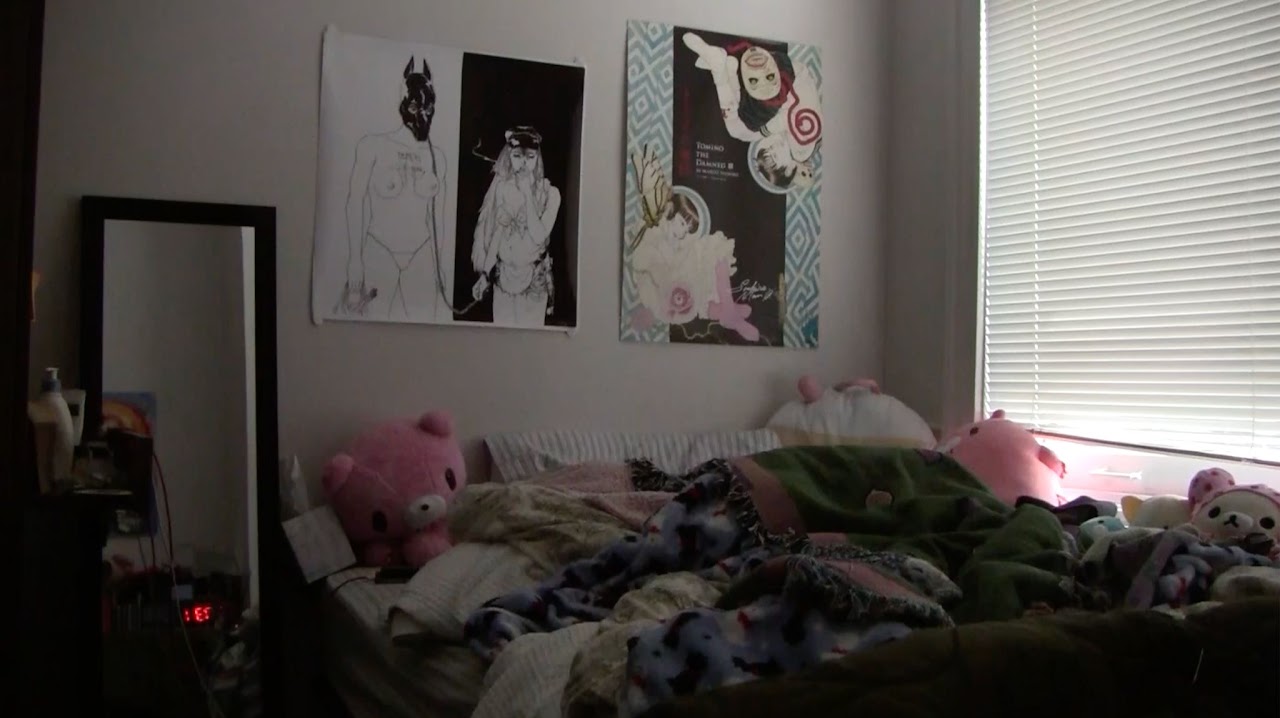
NL: I have a love for empty gallery spaces or even just empty storefronts and stuff. Whenever I’m out and I see one, I always take a photo, even if it turns out shitty. There's something really appealing to me about “void space,” this ambiguous in-between state of a space being inhabited by personal objects and experience versus it in a state of waiting. A lot of the time, I don't want to interrupt how that ambiguity feels for me in this space. There's this kind of unsettling feeling when you kind of enter a gallery space pre-install where it’s just empty. There’s so much potential, and it can be simultaneously exciting and scary, just not knowing what to expect from it. A lot of the performance work that I've been really interested in is tied to that ambiguity in how it completely subverts that expectation for space, where you have to figure out for yourself how you navigate that room and take action beyond the safety net of set norms. That moment of unfamiliarity is really interesting to me - how you are forced to reassess the situation and truly think for yourself, and operate based on your best judgment alone. It can be terrifying, but also very beautiful.
RÖK: I feel like performance can be such a tool to destabilize the space, like you said and really activate it. How did you get into performance?
NL: I took a class at Columbia the semester before I graduated. It’s funny, I think every time I've taken on a new medium, I’ve felt like, “This is so right, this makes so much sense for me, I’m so much closer to myself now.” I felt that particularly strongly with performance. A lot of my performances dealt with space, and the absence of bodies in space, especially the body of a “performer.” Considering the relationship between presence and absence is particularly interesting to me and always has been. One of the pieces I did for the class had a 60 second time limit, and I just had everyone get up and leave the room. The documentation for the piece was just the empty room with all the chairs scattered around and not rearranged. And I love that piece - just a simple gesture like that, an everyday experience that's neglected. In another piece for that class, I was thinking about self-consciousness and how the body is perceived beyond our control, surveilled and judged by others, social norms, etc. Originally, I planned on recording myself just in my bedroom for a whole day, but I ended up cutting down that whole clip to just when I was asleep for the piece. That simple gesture of being asleep and having your body observed even when you're not observing it yourself, an absence of consciousness creating the ultimate hypervigilance and shaken sense of self once you’ve come to…I love a good absence to any capacity [laughs].
![Nicole Leung, Any trace of me is elsewhere, 2022, performance. From the exhibition Columbia College Chicago's Spring 2022 BFA Show, cracks in the glass. For the duration of the show, any trace of me was not allowed in the exhibition space. Accompanied by a text in takeaway catalogue that reads, "Any trace of me is elsewhere." Documentation taken by someone other than myself. Image courtesy of the artist.]()
![Nicole Leung, Any trace of me is elsewhere, 2022, performance. From the exhibition Columbia College Chicago's Spring 2022 BFA Show, cracks in the glass. For the duration of the show, any trace of me was not allowed in the exhibition space. Accompanied by a text in takeaway catalogue that reads, "Any trace of me is elsewhere." Documentation taken by someone other than myself. Image courtesy of the artist.]()
RÖK: No, there’s something so powerful in that suggestion of presence in the hollowness of absence. I'm also curious as a final question, what are you currently working on, or what’s next for you?
NL: Yeah. I have work in a group show at the University of Chicago at Longino, IAH, Existence Bleeding, which is up until March 10! The space is really, really beautiful. Very intimate and kind of strange, but in the best possible way, so I'm excited to see how my work interacts with the space and also other people's work in the show.
Nicole Leung’s work is currently on view at Longino, IAH, Chicago, IL, as a part of the show Existence Bleeding which closes on March 10th.
RÖK: I feel like performance can be such a tool to destabilize the space, like you said and really activate it. How did you get into performance?
NL: I took a class at Columbia the semester before I graduated. It’s funny, I think every time I've taken on a new medium, I’ve felt like, “This is so right, this makes so much sense for me, I’m so much closer to myself now.” I felt that particularly strongly with performance. A lot of my performances dealt with space, and the absence of bodies in space, especially the body of a “performer.” Considering the relationship between presence and absence is particularly interesting to me and always has been. One of the pieces I did for the class had a 60 second time limit, and I just had everyone get up and leave the room. The documentation for the piece was just the empty room with all the chairs scattered around and not rearranged. And I love that piece - just a simple gesture like that, an everyday experience that's neglected. In another piece for that class, I was thinking about self-consciousness and how the body is perceived beyond our control, surveilled and judged by others, social norms, etc. Originally, I planned on recording myself just in my bedroom for a whole day, but I ended up cutting down that whole clip to just when I was asleep for the piece. That simple gesture of being asleep and having your body observed even when you're not observing it yourself, an absence of consciousness creating the ultimate hypervigilance and shaken sense of self once you’ve come to…I love a good absence to any capacity [laughs].
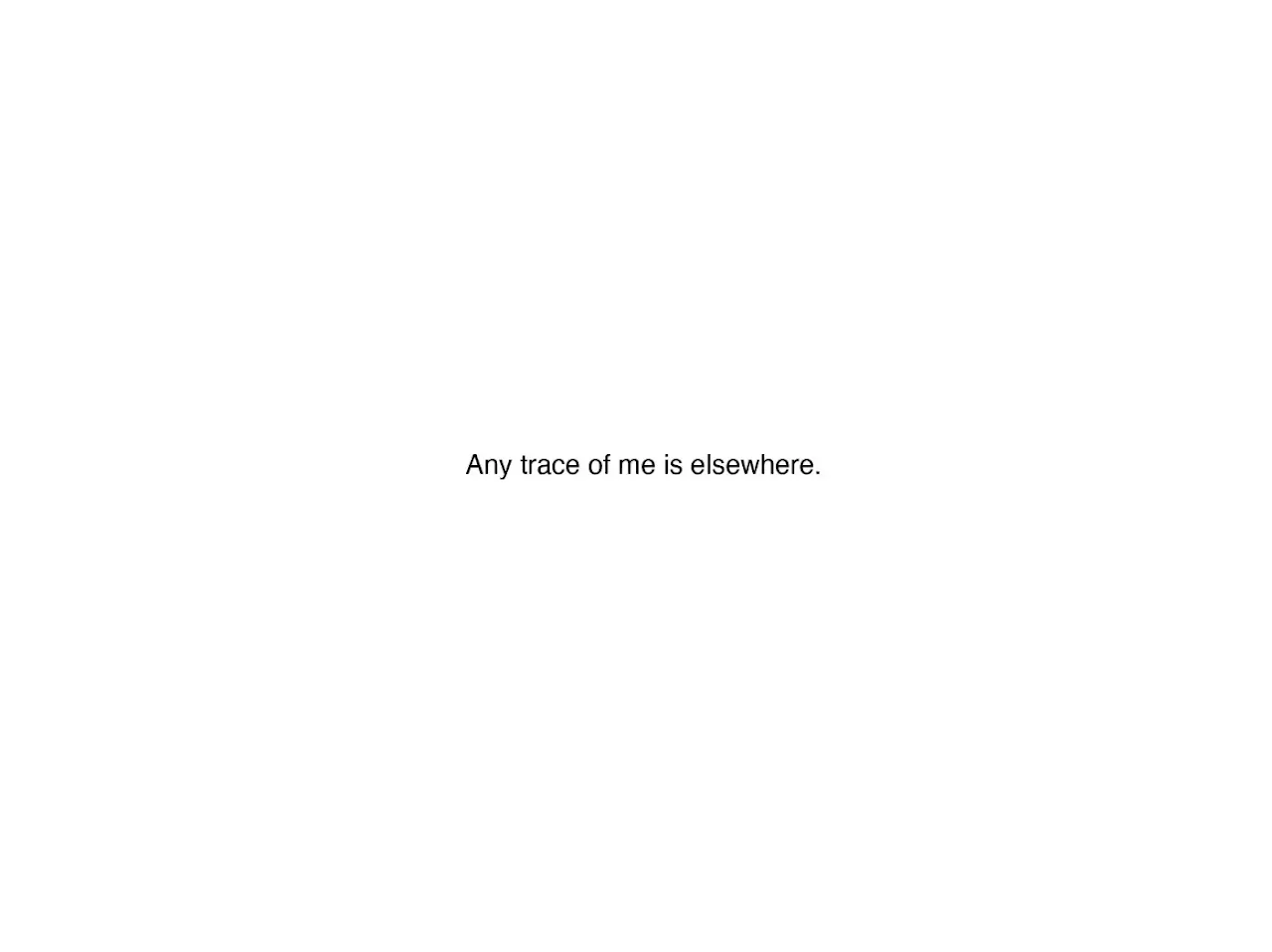
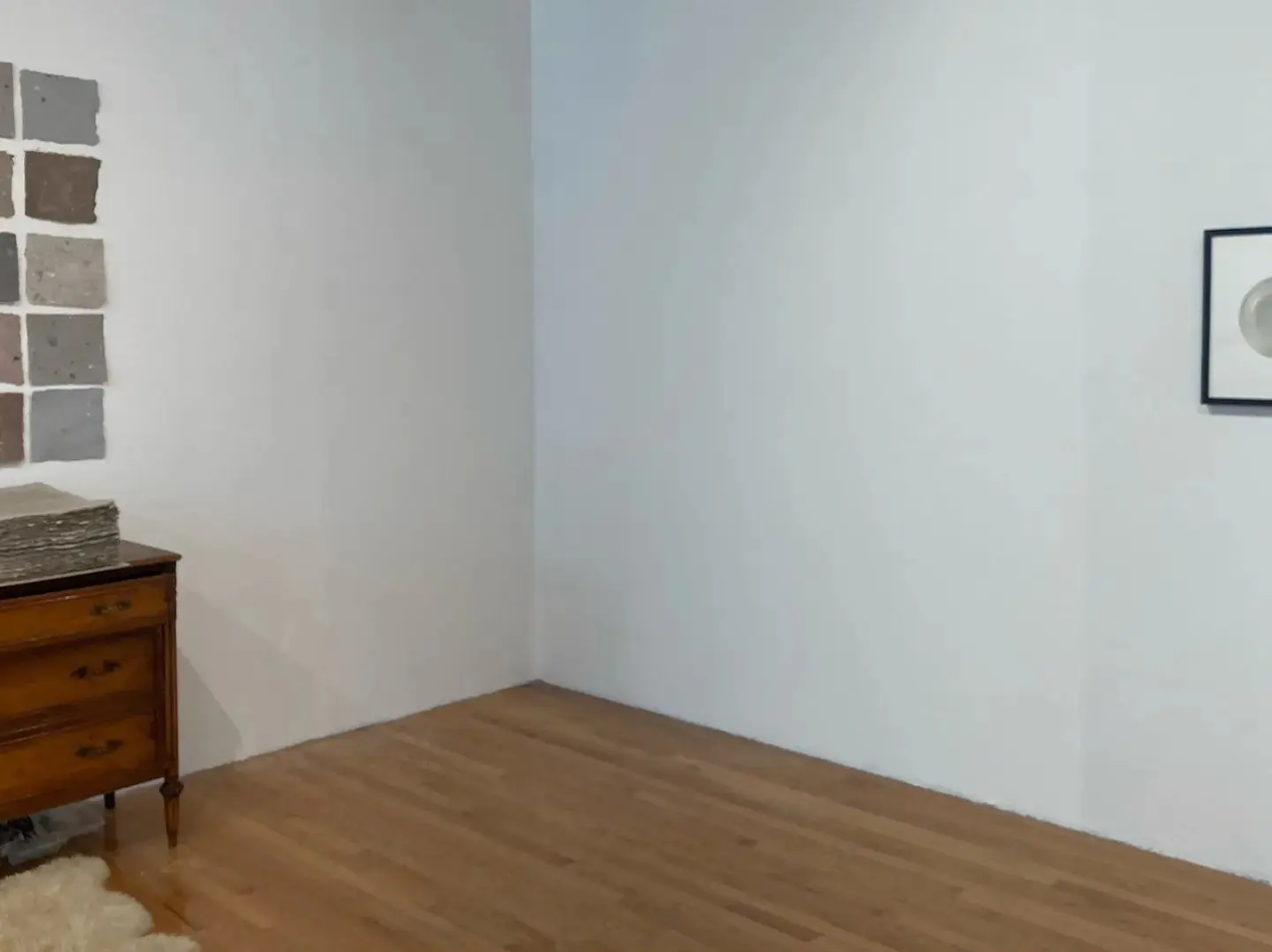
RÖK: No, there’s something so powerful in that suggestion of presence in the hollowness of absence. I'm also curious as a final question, what are you currently working on, or what’s next for you?
NL: Yeah. I have work in a group show at the University of Chicago at Longino, IAH, Existence Bleeding, which is up until March 10! The space is really, really beautiful. Very intimate and kind of strange, but in the best possible way, so I'm excited to see how my work interacts with the space and also other people's work in the show.
Nicole Leung’s work is currently on view at Longino, IAH, Chicago, IL, as a part of the show Existence Bleeding which closes on March 10th.